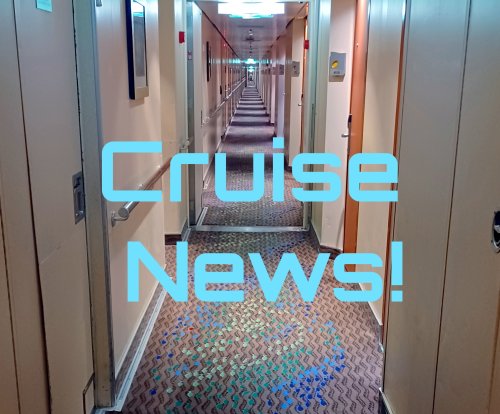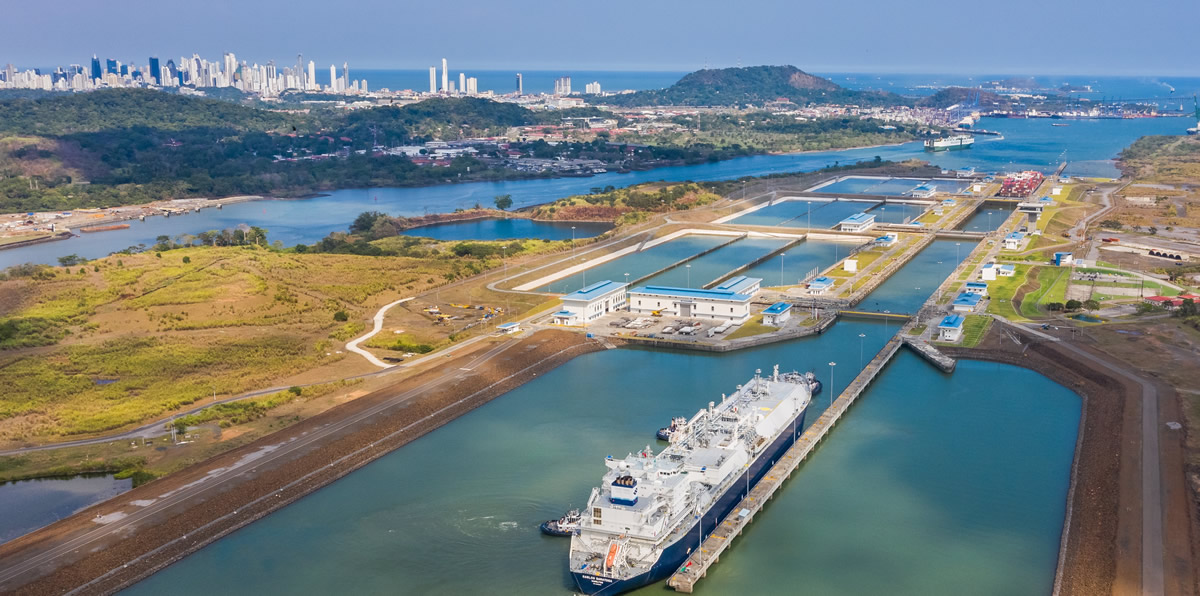Table Of Content
- Anthem of the Seas: The complete guide to everything on board
- Long delays at Panama Canal after drought hits global shipping route
- NCL Closes Loophole, MGM Status Match, Stupid TikTok Cruise Trend, Cruise Travel Essentials and Top Card Offers
- Cruisers are getting younger as Gen Z and Millennials take to the seas
- Drought Saps the Panama Canal, Disrupting Global Trade

Ships that usually crossed the canal in two-and-a-half days had to wait more than nine to make the journey, Insider previously reported. An expansion completed in 2016 added two new locks to accommodate significantly larger “neo-Panamax” ships, which are bigger, heavier and require deeper water to move through the corridor when fully laden. A previous Times investigation found that canal officials ignored warnings that they would need new sources of water in order for the expansion to succeed. “The fact that the Panama Canal operates on freshwater is a major disadvantage compared to other water routes,” said Ricaurte Vásquez Morales, the administrator of the Panama Canal Authority, in a video address last month.
Anthem of the Seas: The complete guide to everything on board
Panama opens new cruise ship terminal at mouth of canal - Woburn Daily Times
Panama opens new cruise ship terminal at mouth of canal.
Posted: Tue, 26 Mar 2024 07:00:00 GMT [source]
The authority holds auctions whenever a ship with a reservation cancels, and slots this year have gone for as much as $4 million. A year ago, the average auction price was around $173,000, according to data from Waypoint Port Services. “It’s just astronomically out of control,” said Francisco Torné, one of the firm’s country managers for Panama.
Long delays at Panama Canal after drought hits global shipping route
Evergreen’s Ever Max for example offloaded 1,400 TEU or nearly 10 percent of her load to make a transit on August 1. Some of the major shipping companies have responded to these issues by announcing surcharges on bookings transiting the canal. CMA CGM starting September 1 is expanding its Panama Canal surcharge of $300 per TEU to additional routes including trips to the U.S. An extended dry season has reduced the availability of water, required to allow vessels to pass through the canal’s locks, which has triggered a logjam of ships awaiting their turn. Panama typically sees a dry season from January to May, but climate change has made rainfall patterns much less predictable. The result is that the increasingly severe droughts and extreme deluges can push canal infrastructure past its operational limits.
NCL Closes Loophole, MGM Status Match, Stupid TikTok Cruise Trend, Cruise Travel Essentials and Top Card Offers
Rising temperatures also evaporate a significant amount of moisture from the reservoir and its watershed. The lake that allows the Panama Canal to function recorded the lowest water level ever for the start of a dry season this year, which means that vastly fewer ships can pass through the canal. The extreme drought, exacerbated by an ongoing El Niño that is affecting Gatún Lake and the whole region appears likely to last into May.
NSW Police release new images in search for church rioters accused of 'violence and aggression'
The canal is favoured by many shippers as it usually reduces cost and transit times, especially for large retailers and energy companies that trade between China and the rest of Asia, and the US. Cutting through the narrow isthmus saves thousands of miles on trips that might otherwise need to route around the tip of South America or through the Red Sea, where Houthi attacks have thwarted traffic in recent months. Considering the potential long-term implications of the Panama Canal crisis, cruise lines may need to reassess their itineraries and operations, possibly resulting in fewer Panama Canal crossings or alternative routes.

As of June 1, the former category will be increased to 8, while the latter will remain at 24, for a total of 32 vessels. The number of ships that can travel through the vital route has fallen sharply this year because of a lack of water for the locks, raising costs and slowing deliveries. Peter Sand, the chief analyst at the freight market analytics firm Xeneta, said disruption at the canal could push short-term shipping rates higher and “prompt shippers to alter their supply chains”. Should the canal bottleneck worsen, it’s likely other major grain exporters such as Brazil, Ukraine and Russia may step in to fill the gap for US products in Asia, Paglia said. Already, Brazilian grains have been more actively traded because of the canal’s increased restrictions, he said.
The new measures were adopted after a slight return of rain so far in April, the ACP also said. As of June 15, the maximum draft allowed for ships passing through the new neopanamax locks will be 13.71 meters to ensure “safe navigation,” the ACP added. However, maintenance work from May 7 to 15 will reduce the number of transits through the Panamax locks from 20 to 17 per day.
Cruisers are getting younger as Gen Z and Millennials take to the seas
Money for an auctioned slot comes on top of the canal’s usual transit fee, which depending on the vessel’s size can be close to $1 million. Relax and enjoy picking your excursions and reading up on the canal history and the wonderful ports and countries you will visit. Just a bit nervous as this drought persists and the cruise lines likely to get hit with additional fees. It is a priority for CBC to create products that are accessible to all in Canada including people with visual, hearing, motor and cognitive challenges. Mr Paton said that if that continues, it will be increasingly difficult for the canal to guarantee that the largest ships are going to be able to get through. The frequency of major El Niño drying patterns has risen significantly during the last 25 years of the canal's 109-year history.
Drought Saps the Panama Canal, Disrupting Global Trade
Cruise ships pay a hefty surcharge for a reserved transit date and time, and the Canal Authorities are very willing to rake in this extra. Panama Canal Authority recently opened two more passage slots per day for ships that don't have have priority to pass, as container ship do, and this week the backlog had decreased since to 115 ships. Ship owners have the options of carrying less cargo, adding thousands of kilometres to their trips or grappling with queues that earlier this month backed up 160 vessels and delayed some ships by as much as 21 days. As many as 24 vessels will be permitted to pass through the system daily, up from 22 currently, the canal authority said in a statement Friday. The Panama Canal Authority further reduced the number of boats that can transit through the strategic waterway, which has been hit by an intense drought. Weather-related problems have been building at the canal for some time, prompting the ACP to pledge to save water during the rainy months, although it said that the economic impact was unavoidable.
Live maritime tracking websites showed about 140 vessels near the canal on Monday, a considerable increase from the level of about 90 ships usually seen in the area during the rainy season, which lasts from May to December. In a fresh demonstration of the impact of the climate crisis on global business and trade, the Panama Canal Authority (ACP), which manages the waterway, introduced restrictions on the number of transiting vessels as a result of the drought. So I think that I figured out why our cruise on Oceania Cruises this winter has now moved from Colombia to Panama, it’s because their sister line with much larger ships has shifted operations out of Panama and into Colombia. What I haven’t been able to determine is how much of this has to do with the drought and low water levels and how much of it has to do with the cruise facilities in Panama. Understanding the operational challenges posed by the Panama Canal’s low water levels is crucial for cruise passengers affected by these cancellations. Aurora Expeditions and other cruise operators are likely exploring alternative solutions for affected travellers, such as rerouting or rescheduling their journeys.
So my suggestion is that if you’re booked on a Norwegian Cruise calling on Panama go check their website and see if your itinerary has been changed. There are four issues per year, with each issue is packed full of must-read features, including cruise news, reviews, destination guides and the most enticing itineraries. Travellers are advised to stay informed and flexible about their regional cruise plans and to contact their cruise operators for more information and guidance on the next steps.
Gatun Lake, which forms a key stretch of the canal system and provides fresh water for its locks, saw little rain this year, as El Niño triggered a withering drought. So the Panama Canal Authority has ratcheted back the number of ships allowed to pass, from an average of 36 to 38 per day in the past to an expected 18 in February, half the normal amount. The authority also reduced draft levels — how low a vessel can sit in the water — meaning some ships must carry less cargo. Even if the rains return on time next year, traffic congestion and draft restrictions will linger long into 2024. In 2023, Gatun Lake experienced water levels below seasonal norms due to insufficient rainfall.
“So, potentially, US grain exporters will be hit hardest by the disruption to trade flows,” Paglia said. Each choice adds cost, at a time when governments around the world are struggling to tame inflation. And the bottleneck will only worsen in the coming months as Panama enters its annual dry season, which typically begins in December and lasts until April or May. Based on the story, I'll suggest the cruise line have determined the ROI is insufficient due to high fuel costs, Canal costs and few ports to sell shore-ex. To put it in perspective, when sailing the Panama Canal shuttle many years ago, we were on 14-day cruises, with many more ports. Also all the water used for the locks and Lake Gatun is fresh water relying on the rain fall during the rainy season in the mountains of Panama.
The Panama Canal provides a short cut between the Atlantic and Pacific oceans for 6% of the world’s maritime commerce. The Panama Canal Authority (ACP), which allocates reservations, has slashed this number to 24. On December 1st it will go down to 22, and from February onwards only 18 ships will be able to cross each day. In late July, the state-owned ACP limited the number of vessels passing through the waterway each day to an average of 32, down from the usual 36. In previous droughts, weight restrictions were imposed because heavier boats risk running aground in the shallower water.


